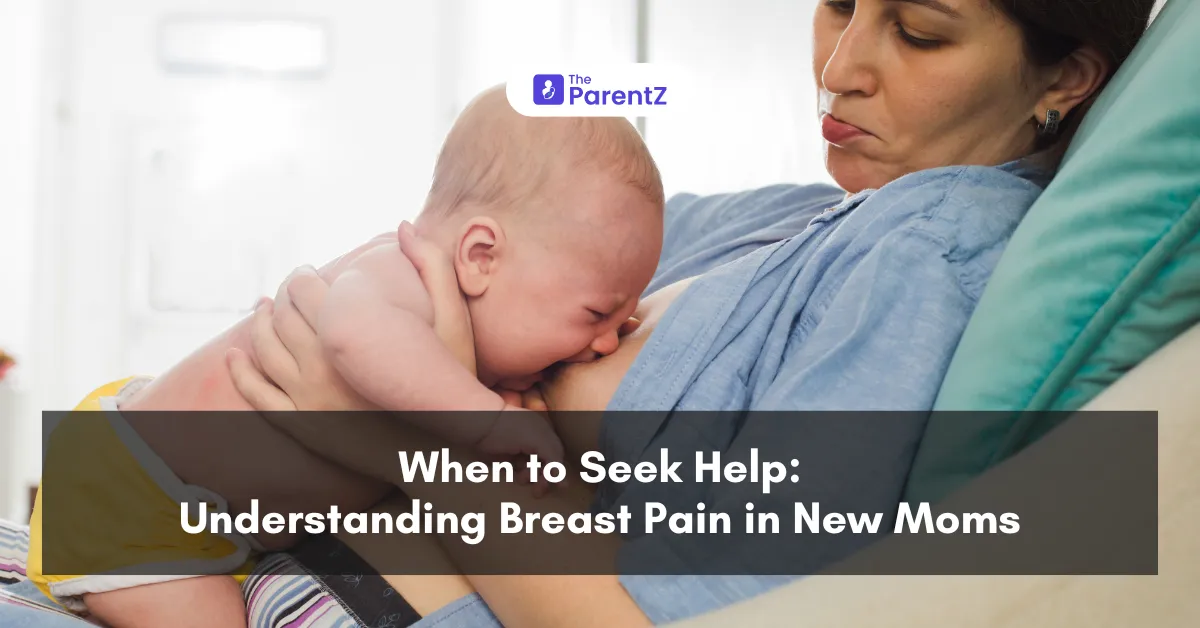Breast pain is a common experience for new moms, but understanding when to seek help can make a huge difference in your breastfeeding journey. While some discomfort may be normal, certain situations require immediate attention. This guide will help you identify the signs that indicate it’s time to reach out for support.
Understanding Normal Discomfort
In the early days of breastfeeding, it’s not unusual to experience some level of pain or discomfort. Your body is adjusting to this new routine, and both you and your baby are learning the ropes. However, if you notice persistent or severe pain, it’s essential to assess the situation.
- Sore Nipples: If one or both of your nipples hurt at every feeding or if they start to crack or bleed, you should seek help immediately. Proper positioning and attachment are crucial. A midwife, health visitor, or breastfeeding supporter can guide you on how to ensure your baby is latched correctly. A proper latch ensures that your nipple sits comfortably against your baby's soft palate, minimizing the likelihood of discomfort.
- Persistent Pain: If nipple pain continues despite correct positioning and attachment, it may indicate an underlying issue, such as an infection like thrush. Don’t hesitate to consult your healthcare provider for further evaluation.
Identifying Severe Conditions
1. Breast Engorgement
Breast engorgement occurs when the breasts become overly full, leading to swelling, hardness, and pain. This condition is common in the early days after delivery as your milk supply adjusts to your baby's feeding needs. Symptoms can include:
- Breasts that feel tight and painful
- Difficulty latching for your baby
- Possible fever or chills
If engorgement persists or is accompanied by fever, it’s crucial to consult a healthcare provider. They can provide guidance on managing engorgement and ensuring your baby can latch properly to relieve the pressure.
2. Blocked Milk Ducts
Blocked milk ducts happen when milk doesn’t flow freely from the breast, leading to localized pain and tenderness. Signs of a blocked duct include:
- A hard lump in the breast that doesn’t go away after feeding
- Soreness in a specific area of the breast
- Redness around the lump
If this condition is not addressed quickly, it can lead to mastitis. Therefore, if you notice a hard spot that lasts more than a couple of days or if you develop a fever, seek medical advice.
3. Mastitis
It is the inflammation of breast tissue that can develop if a blocked duct remains unresolved. It can lead to infection and presents with symptoms such as:
- A painful, hot breast
- Red patches on the skin
- Flu-like symptoms including fever, body aches, and fatigue
If you suspect mastitis, it’s essential to continue breastfeeding from the affected breast, as this can help clear the blockage. However, if symptoms worsen or do not improve within 12-24 hours, contact your healthcare provider for possible antibiotic treatment.
4. Breast Abscess
If mastitis is left untreated or does not respond to treatment, it can progress to a breast abscess—a collection of pus that may require surgical drainage. Symptoms include:
- Persistent pain despite treatment for mastitis
- Increased swelling and redness in the affected area
- Fever and chills
If you experience these symptoms, immediate medical evaluation is necessary as an abscess may require intervention beyond antibiotics.
5. Thrush
It is a fungal infection that can affect both mothers and babies during breastfeeding. It typically presents with:
- Intense burning sensation in the nipples during and following breastfeeding
- Bright pink or shiny appearance of the nipples
- White patches in your baby's mouth
If you experience continuous nipple pain not alleviated by proper latching or positioning, consult your healthcare provider for diagnosis and treatment options.
When to Seek Help?
Here are clear situations when you should reach out for help:
- Severe or Persistent Pain: Any ongoing pain that disrupts breastfeeding should be evaluated by a professional.
- Signs of Infection: If you have symptoms like fever, chills, or flu-like feelings combined with breast pain.
- Changes in Breast Appearance: Red patches, swelling, or lumps that do not resolve after a few feedings should be checked.
- Difficulty Feeding: If your baby seems unsettled after feeds or has difficulty latching.
- Emotional Distress: Breastfeeding should be a bonding experience; if pain is causing significant stress or anxiety, seek support.
Finding Support
There are many resources available for new mothers experiencing breast pain:
- Healthcare Providers: Your midwife or doctor can provide immediate support and guidance.
- Lactation Consultants: These specialists can help with positioning and attachment issues.
- Support Groups: Connecting with other mothers can provide emotional support and practical tips.
Conclusion
Remember that seeking help early can prevent minor issues from becoming major problems. Breastfeeding is a learning process for both you and your baby; don’t hesitate to reach out for assistance when needed. Your comfort and well-being are paramount in this beautiful journey of motherhood.








Be the first one to comment on this story.